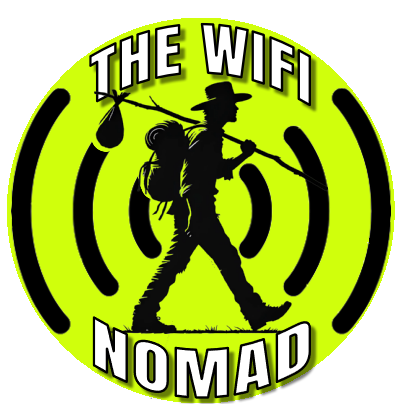I. Introduction
Have you ever clicked on a link to buy a product someone recommended, only to realize later that they might have earned a small commission from that purchase? If so, you’ve already brushed up against the world of affiliate marketing—whether you knew it or not. Affiliate marketing is a simple but powerful way to earn income online. You pick a product or service you believe in, share it with an audience that trusts your opinion, and if they make a purchase through your special link, you get paid a commission.
What makes affiliate marketing so appealing is that you can do it without creating your own products, managing a huge inventory, or handling customer service. This model is perfect for beginners looking to dip their toes into online entrepreneurship because the startup costs are relatively low and the income potential is surprisingly high.
In this series, we’ll walk through everything you need to know to launch and grow your own affiliate marketing business. From choosing a niche you’re passionate about, to building an online presence, to understanding advanced strategies like retargeting ads and funnels, we’ll cover it all. This very first article sets the stage by explaining the basics of affiliate marketing, highlighting why it’s so popular with beginners, and giving you an overview of what to expect as you move through the rest of the series.
II. What Is Affiliate Marketing?
At its core, affiliate marketing is a partnership between three main players: the merchant (or advertiser), the affiliate (that’s you), and the consumer. The merchant has a product or service they want to sell, and the affiliate’s job is to connect the consumer to that product through their unique affiliate link. When a consumer makes a purchase after clicking your link, you earn a commission.
- Merchant/Advertiser: The brand, company, or individual who owns the product or service. This can be a large retailer, a small e-commerce shop, or even a software company offering digital tools.
- Affiliate/Publisher: You (or anyone else promoting the product). Affiliates typically share their links through blogs, social media posts, YouTube videos, podcasts, or any other online platform.
- Consumer: The end user who buys the product or service after clicking your special affiliate link.
It’s a simple model, yet the possibilities are vast. Some people promote physical products like running shoes or home décor, while others focus on digital products like software, e-books, or subscription services.
III. Why Affiliate Marketing Is a Great Way to Earn Online
Many online entrepreneurs are drawn to affiliate marketing because it offers several clear benefits:
A. Low Startup Cost
You don’t need to spend thousands of dollars on product development. If you choose to build a blog, you’ll need hosting and a domain name, but beyond that, your expenses can be minimal. Those who prefer social media can often start for free by creating engaging posts or short videos.
B. Flexibility
Want to work from a beachside café? Or maybe at night when the rest of the world is asleep? Affiliate marketing lets you set your own schedule and work from anywhere with an internet connection. You also get to decide which products to promote, so you have control over your business direction.
C. Scalability
As your audience grows, your earning potential increases. You can add new products to promote, expand into related niches, or branch out to new platforms. Unlike a job that pays a fixed wage, affiliate marketing rewards your effort and creativity.
D. No Product Creation Required
Producing your own product can be time-consuming and costly. Affiliate marketing sidesteps those hurdles, allowing you to focus on the fun part: creating engaging content and connecting people with products they’ll love.
E. Broad Range of Opportunities
There’s an affiliate program for nearly every industry you can imagine—fitness, fashion, tech, home décor, personal finance, and so much more. If a topic exists, chances are there’s a product or service you can promote within that niche.
IV. Core Components of the Affiliate Ecosystem
To better understand how it all works, let’s break it down:
- Affiliate Link
- This unique URL, provided by the merchant, tracks sales back to you.
- If you’re blogging about a new blender, you’d include an affiliate link to that blender’s product page.
- When someone clicks and buys, the system recognizes you as the referrer.
- Commission Structure
- Percentages vary: Some programs pay as low as 3–5%, while others can go as high as 50% or more.
- Some merchants pay per lead (like a subscription signup), while others pay per sale.
- It’s crucial to compare commission rates and find programs that compensate you well for the work you invest.
- Cookie Duration
- The “cookie” tracks how long a user’s actions will count toward your commissions.
- A 24-hour cookie means the user must make a purchase within 24 hours for you to earn a commission.
- Longer cookie durations (like 30 days) are more favorable because you have a bigger window for a sale to register.
- Payout Method and Threshold
- Merchants may pay affiliates via PayPal, bank transfer, or check.
- Some require you to reach a minimum earnings threshold (e.g., $50 or $100) before you can withdraw.
V. Types of Affiliate Programs
To succeed, you need to choose the right type of product that aligns with both your interests and your audience’s needs.
A. Physical Product Affiliates
- Examples: Amazon Associates, Etsy affiliates, brand-specific programs (like Nike or REI).
- Pros: Physical items are often relatable, and big brands have established trust.
- Cons: Commissions can be lower (especially on Amazon), and shipping constraints might affect where you can effectively market.
B. Digital Product Affiliates
- Examples: Online courses, e-books, membership sites, or downloadable software.
- Pros: Often pay higher commissions; easy for the customer to access the product instantly.
- Cons: Can be more niche-specific, so you need to target the right audience carefully.
C. Subscription Services
- Examples: Web hosting companies, SaaS tools, membership communities.
- Pros: Potential for recurring commissions; once someone subscribes, you earn money monthly as long as they stay on board.
- Cons: You rely on the service maintaining high customer satisfaction for your recurring income to continue.
VI. Common Misconceptions
Misconception 1: “It’s Fast and Easy Money”
Yes, the model is straightforward, but expecting overnight riches will lead to disappointment. Building trust with an audience takes time. You’ll have to create valuable content and be consistent. While some people see quick wins, most successful affiliates put in months or even years of steady effort.
Misconception 2: “You Have to Be an Expert or a Tech Whiz”
If you can create basic blog posts or social media updates, you’re already off to a solid start. Tools like WordPress make website creation simple, and many affiliate networks offer tutorials on how to insert links and track your performance. Much of the “tech” side is user-friendly now.
Misconception 3: “You Need Thousands of Followers to Make Money”
A large audience helps, but a small, engaged community can also earn meaningful commissions. If your readers trust you and value your recommendations, they’ll be more likely to purchase through your links—even if you don’t have a massive following.
Misconception 4: “Affiliate Marketing Is Unethical or Spammy”
Affiliate marketing is entirely legitimate, provided you remain transparent about your affiliate links and genuinely promote products you believe will benefit your audience. It only becomes spammy when affiliates push low-quality or unrelated offers solely for the sake of a commission.
VII. The Series Roadmap
To help you master affiliate marketing step by step, here’s an overview of what’s coming next:
- Mindset for Affiliate Marketers
- How to stay motivated, deal with challenges, and keep growing even when results seem slow.
- Choosing the Perfect Niche
- Discover how to find a topic that matches your passion and has real potential for profit.
- Identifying Your Target Audience
- Learn how to figure out exactly who you’re speaking to, so your recommendations hit home.
- Finding the Right Affiliate Programs
- A deeper dive into selecting programs that align with your audience and pay you well.
- Creating Content That Converts
- Whether you blog, vlog, or go heavy on social media, you’ll need compelling content to attract and retain an audience.
- Building Trust with Your Audience
- Establish authenticity by being upfront about your affiliate relationships and focusing on value.
- SEO for Affiliate Marketers
- Learn how to attract organic traffic through search engine optimization.
- Social Media for Affiliate Marketing
- Unlock the power of platforms like Instagram, Pinterest, TikTok, and more to expand your reach.
- Email Marketing for Affiliate Marketers
- Create an email list that helps you cultivate relationships and promote relevant offers.
- Advanced Affiliate Strategies: Retargeting & Funnels
- Explore how to set up funnels and use retargeting ads to boost conversions.
- Analyzing Performance: Tracking Metrics for Success
- Get to know the numbers so you can refine your strategy—click-through rates, conversions, ROI, and more.
- Scaling Your Affiliate Marketing Business
- How to go from small-scale side hustle to a thriving, diversified income stream.
- Common Affiliate Marketing Mistakes to Avoid
- Avoid the pitfalls and keep your momentum going strong.
Each article will guide you in a logical sequence to help you build a stable, growing affiliate business. By the end of this series, you’ll have a blueprint you can follow to continue honing your skills and scaling your results.
VIII. Action Steps and CTAs
Reflect on Your Why
Before diving deeper into the series, think about what attracted you to affiliate marketing. Is it the desire for financial freedom? The dream of working from anywhere? Or just a fun side project to see where it leads? Write down your top three reasons. This simple act can help you stay focused when the journey feels challenging.
Subscribe or Follow
If you haven’t already, subscribe to this blog or follow my updates so you don’t miss the next article. Each new piece will build on what you learn here.
Start Brainstorming Niches
Got any hobbies or interests you’re already passionate about? Make a quick list. We’ll discuss how to evaluate a niche’s profitability in a future article, but it helps to know where your heart lies.
(Place a subtle affiliate link here if relevant, for example, a recommended blog hosting service or a simple keyword research tool. Ensure it blends naturally into the text.)
IX. What’s Next (Teaser for the Next Article)
In our next piece, Article #2: Mindset for Affiliate Marketers, we’ll talk about how to stay patient and push through the inevitable bumps in the road. Many beginners give up too soon because they expect quick results, but with the right mindset, you can outlast the competition and see real progress. We’ll discuss how to handle the fears and frustrations that often come up, and we’ll share tips on how to keep yourself motivated for the long haul.
X. Conclusion
Affiliate marketing is an approachable way to earn money online, offering flexibility, low barriers to entry, and a chance to grow at your own pace. You don’t need to be a tech genius or have an established following to get started. All it takes is the willingness to learn, a dash of creativity, and the persistence to keep going when things don’t happen overnight.
Remember, this first article is just the starting line. We’ll go step by step so you can confidently set up your affiliate marketing system. You’ll learn how to pick a niche, find your audience, create valuable content, and ultimately earn commissions by promoting products that align with your passions and your readers’ needs.
Get ready to explore mindset in the next article—because no matter how great an opportunity is, it’s tough to succeed if you’re not in the right headspace. Thanks for reading, and I can’t wait to share more about this exciting journey!


